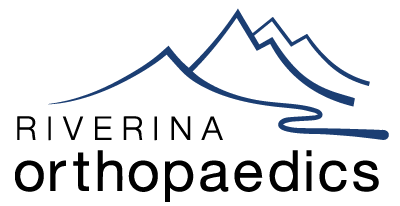Ankle sprains are one of the most common sporting injuries. Usually the injury recovers with suitable rest and physiotherapy. Ankle instability occurs when the ankle repeatedly gives way during sporting or daily activities. This leads to recurrent ankle sprains, joint pain, swelling, inflammation, and further damage to the ligaments around the ankle.
Some people experience intermittent ankle pain which occur with episodes of instability whilst others feel that their ankle aches more often. Recurrent instability episodes can cause damage to the joint surface cartilage, the formation of bony spurs and arthritis.
Non Operative Management
The first line of treatment for ankle sprains is rest, ice, compression, elevation with painkillers and anti-inflammatories (if tolerated). Physiotherapy is then useful to regain range of movement, strength, balance and joint position sense (proprioception). An ankle brace may be useful for people who have tried all these measures and experience ongoing problems with sporting or daily activities. Finally, a targeted corticosteroid injection may offer relief from ankle inflammation and help settle symptoms so that physiotherapy can continue.
Operative Management
When all these non-operative measures fail, and recurrent ankle instability becomes an ongoing problem, surgery is indicated. The ankle ligaments are assessed clinically and an MRI scan may be necessary to identify any problems within the ankle joint itself or the tendons and ligaments around the joint.
There are 2 components to the surgery. An incision is made over the outside of the ankle where the ligaments have been torn away and the ligaments are reconstructed in an anatomical fashion and reinforced with overlying tissue. If indicated, the tendons behind the ankle are inspected and repaired. At the end of the operation a plaster is usually applied to immobilise the ankle and protect the reconstruction and wounds.
In addition to the ligament repair, an arthroscopy is initially performed through 2 small incisions at the front of the ankle. The joint surfaces are inspected, inflammatory and scar tissue is removed, and any bony spurs are trimmed away.
Post-Operative Recovery
As with all reconstructive surgery your rehabilitation and postoperative physiotherapy regime forms a vital part of your recovery from surgery and return to normal activities. The first 2 weeks are dedicated to reducing the swelling with elevation of the foot and mobilising non-weight bearing with crutches to allow the wounds to heal. You will then be allowed to wear a lace up ankle brace and gradually increase your weight bearing status and work on range of motion.
6 weeks after surgery the brace is removed for daily activities and an intensive strengthening and balance program begins. The brace is to be worn for all sporting activities and you should be able to return to sport 3-6 months after surgery. The ankle may always be a bit stiffer than the normal side, with a slight reduction in range of motion not uncommon, but this is rarely a significant problem.
Risks & Complications
No surgery is completely risk free. The risks and complications will be assessed and discussed with you. There is always a small risk of infection, blood clots, nerve injury and anaesthetic problems and measures are taken to reduce these. There is approximately a 5% chance of experiencing problems with recurrent instability and this is usually due to a fresh injury or sprain. In some patients the ligament tissues are of poor quality and a synthetic ligament augment may be required. A good outcome is achieved in more than 90% of cases. Recovery times and swelling also vary.
Average Recovery Times
Hospital stay 1 night
Rest & elevation 2 weeks
Plaster = crutches 2 weeks
(non-weight bearing)
Lace-up brace (full time) 4 weeks
(2 weeks partial then
2 weeks full weight bearing)
Lace-up brace 6 weeks
Time off work
– Seated 2-3 weeks
– Standing 6 weeks
This page is a brief overview and not designed to be all-inclusive. If you have any further queries, please contact us.


